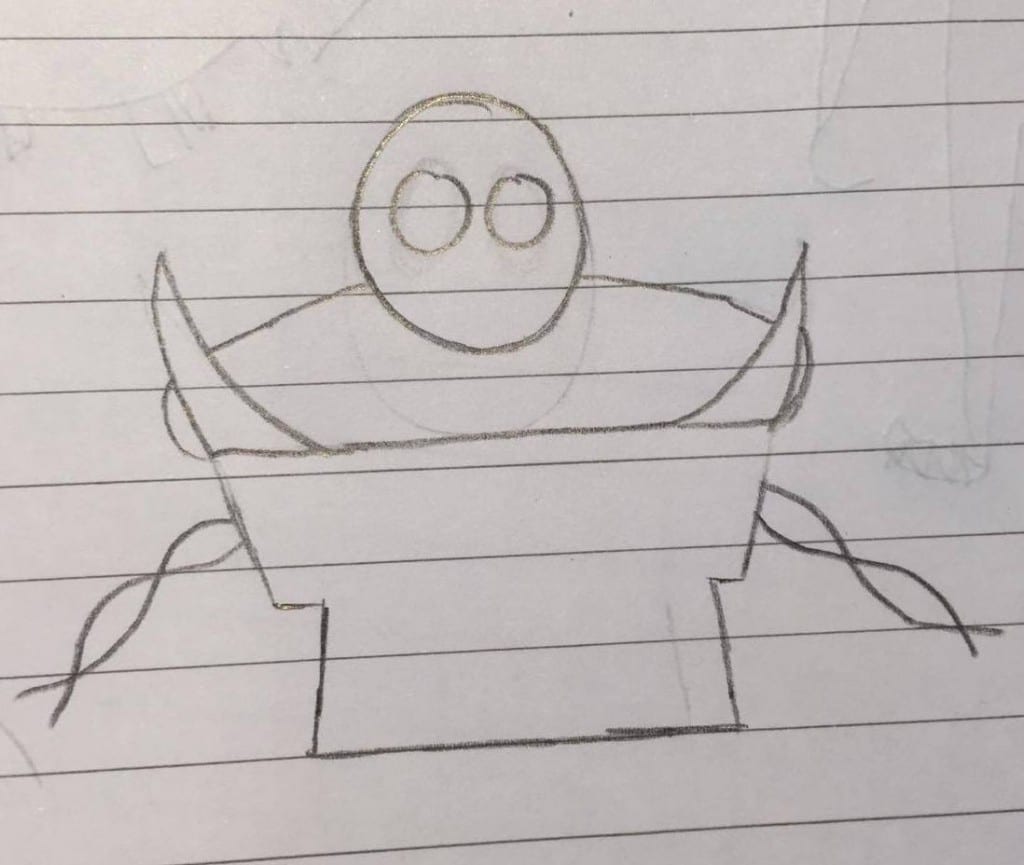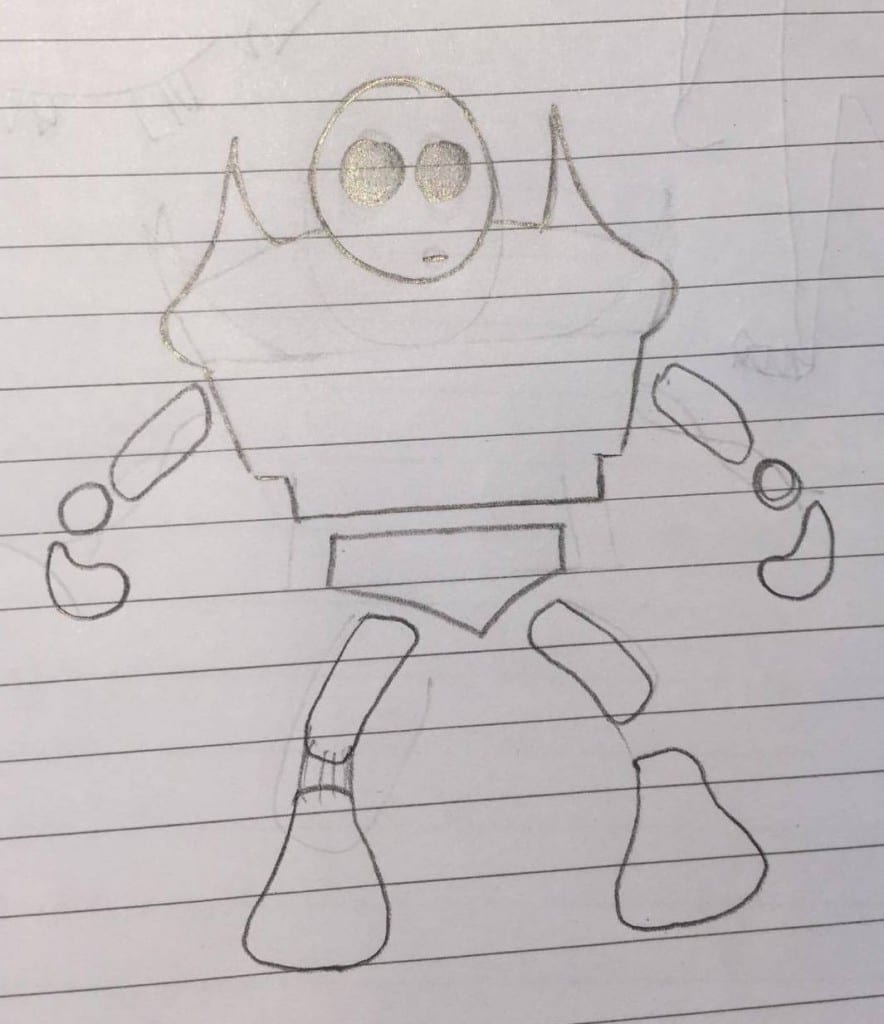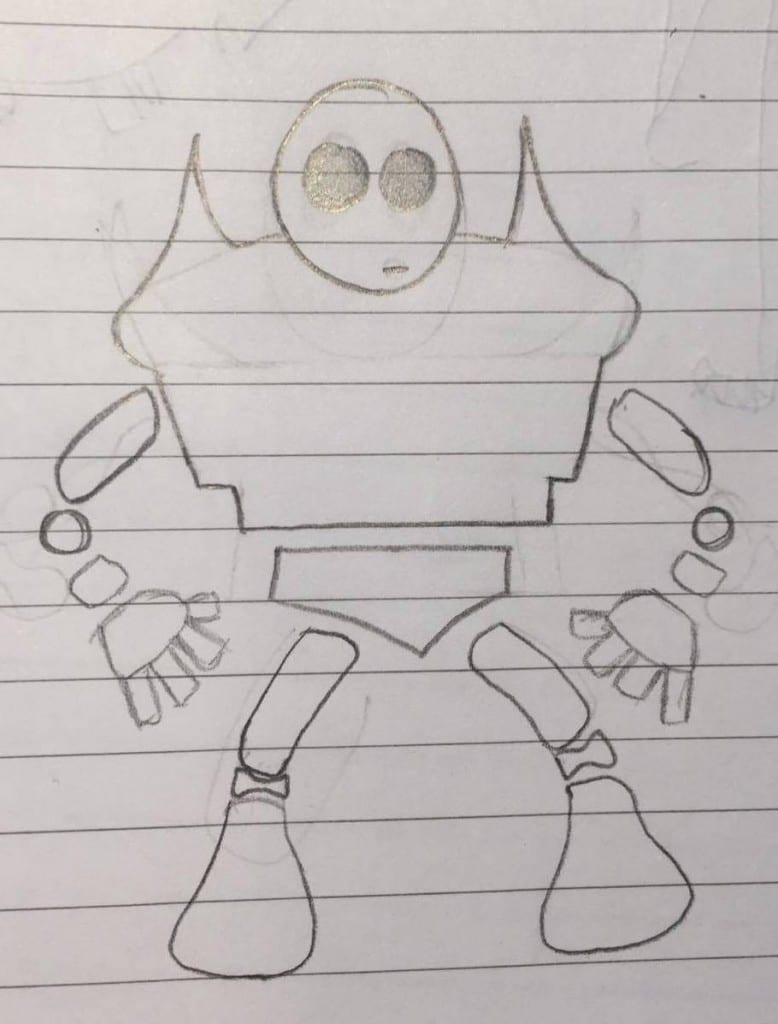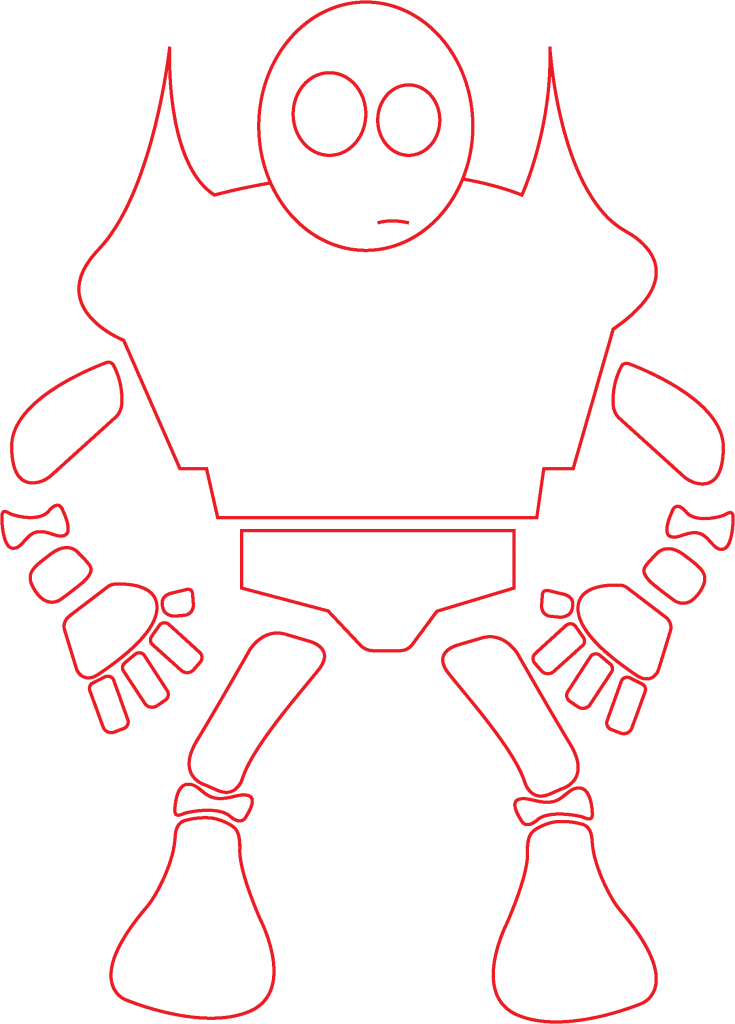Before I could begin creating any models in a 3D modelling software, I needed to have an idea of the starring creature in my project would look like. To do this, I began to sketch out ideas on paper and confirm the initial anatomy of the character.
Inspiration
Looking to inspiration, a key influence was a character from a video game I played as a child. In the original Rayman 2 game, the key antagonists are an army of Robo-Pirates lead by one Admiral Razorhead. Although these robots-pirates are mean enemies of the protagonist, as a child I used to play as this character in the following Rayman racing game Rayman M, where all characters were equal.


Robo-pirates have a large torso made of metal, with large limbs made of different components, one a gun and the other a hook. His head looks to be like a knights helmet, rounded at the top and pointed at the chin. This creature is made out of metal, something that isn’t found in the natural environment, however its short stocky figure and their reaction to their surroundings does add an element of simplemindedness, making an almost childlike innocence.
Another inspiration to help me begin to design my final creature came from a Studio Ghibli design. The spirits in the film ‘Princess Mononoke’ have a minor role, however, their charming faces and small size made them an instantly recognisable part of the film. Their motif is simple, the spirits are white bodied, with slightly human-like features. They have two arms, two legs, two eyes, (some have) a nose and a mouth.

What inspired me about these characters was their emotionless faces. Their face consists of 3 to 4 circles, all varying in size, that bare no resemblance to any particular creature. This design adds innocence to their otherwise simple character design.
Beginning my design process
First off, I wanted to establish the size difference between the head and the torso of my creature. Once deciding this, I began the initial design of the body, experimenting with different shapes.

The above was the first sketch I made. I began by outlining a simple robo-pirate like shape and added on spikes to add an originality. During this time, I also experimented with how the limbs of the character would be attached to the main part of its body, and I initially wanted to use a vine-like system.


After the initial, I drew two different sketches, one with a basic shape, the other with added spikes to the shoulders. Because I wanted to include more elements of the character that could be incorporated into the multiple backgrounds I intend to place it in. Adding the spikes means they may be susceptible to things the environments may be filled with, examples being caught in trees and vines, sticking out behind mountains, or even just having wildlife climb and settle in between them.
When sketching these two designs, I also chose to taper the bottom of the body, having its groin shapes like a typical pelvis, and the above torso slowly decreases to a lesser point.

The next thing I needed to design is the limbs and accents of the character. To begin, I sketched simple anatomy fundamentals that fit the body of this creature. I initially intended to develop each limb further, but as I was developing certain parts, it became clear that the simple design I had already created worked extremely well. The feet of the character tapered at the top and became thick at the bottom, making it easy to blend with the group it stood on, and the thin legs seemed appropriate to make sure it doesn’t stand out further.
The arms began similarly to the legs, having a thin upper arm with a joint between that and the hand. When designing the hand, I began to make it rather small as well but felt this lost the human-like features I had hoped to create in order to make viewers experience empathy. Because of this, I added fingers and a thumb to the creature and enlarged them to keep in proportion with the feet.
FINAL DESIGN

In the final design, I chose to add joints between the legs, for added realism, and also added a lower arm for practical mobility. Between the joints, in order for them to seem attached, I decided to leave blank, drawing them apart from each other for modelling purposes. This meant I could design each element whilst isolated, placing them relatively close to each other to insinuate they are attached.








